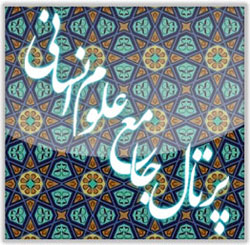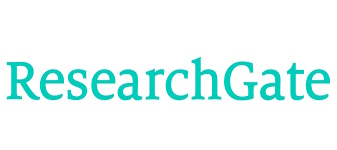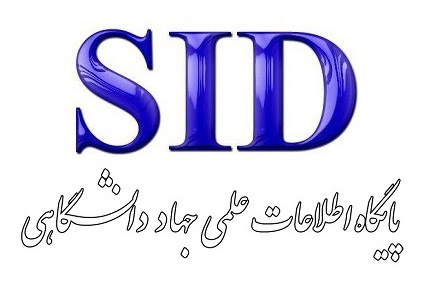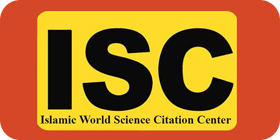Designing a Creativity Development Model for Lower Secondary Students in Geography in Dhi Qar Province Using the Emerging Grounded Theory Approach
Keywords:
Economic, Social, Human Resources, Secondary School, Organizational, EducationalAbstract
Objective: This study aims to design a creativity development model for lower secondary students in geography classes in Dhi Qar Province, Iraq, using the emerging grounded theory approach.
Methodology: The research is applied in purpose and qualitative in nature, conducted using an emerging grounded theory approach. The statistical population comprised educational and psychological experts selected through theoretical sampling until theoretical saturation (n=15). Data collection was conducted through semi-structured interviews, and data analysis proceeded in three coding phases: open, axial, and selective. Finally, the dimensions, components, and indicators of the model were validated and prioritized through expert consensus.
Findings: The results identified a creativity development model consisting of four dimensions (organizational, educational, human resources, and socio-economic), 14 components, and 102 indicators. Key components included organizational culture, structure, curriculum planning, content, teaching methods, assessment, educational equipment, family, students, teachers, administrators, media, financial resources, and social effectiveness. The highest priorities were attributed to organizational culture, educational planning, family influence, and media support.
Conclusion: The proposed model provides a comprehensive and localized framework to enhance creativity in geography education at the secondary level. Emphasizing organizational systems, instructional infrastructure, human capital development, and supportive socio-economic conditions is crucial. This model can serve as a strategic tool for educational policy-making and fostering creative capacities among students in Iraq’s secondary schools.
Downloads
References
Anser, M. K., Yousaf, Z., Sharif, M., Yijun, W., Majid, A., & Yasir, M. (2020). Investigating employee creativity through employee polychronicity and employee resilience: a glimpse of nurses working in the health-care sector. European Journal of Innovation Management. https://doi.org/10.1108/EJIM-05-2020-0176
Arnout, B. A., & Almoied, A. A. (2020). A structural model relating gratitude, resilience, psychological well‐being and creativity among psychological counsellors. Counselling and Psychotherapy Research. https://doi.org/10.1002/capr.12316
Asadi, M., & Ahmadabadi, A. (2023). Effective teaching strategies in geography education (Case study: Tenth-grade humanities). Research in Social Studies EducationVL - 5(4), 18. https://alborzmag.cfu.ac.ir/
Baghaei, H., Akbari, S., & Tolooei, L. (2023). Creativity and innovations in schools. 1st International Conference on Sociology, Social Sciences and Education with a Future Perspective, Bushehr, https://sspp.iranjournals.ir/article_631_0.html?lang=en
Cenberci, S. P. (2018). The Investigation of the Creative Thinking Tendency of Prospective Mathematics Teachers in Terms of Different Variables. Journal of Education and Training Studies, 6. https://doi.org/10.11114/jets.v6i9.3434
Dhany, K. R., & Yulianti, D. (2025). The Prospects and Challenges of STEM-PjBL with Design Thinking Strategies in Enhancing Students' Creativity and Entrepreneurial Thinking in the Context of Plastic Waste Recycling: Teachers' Perspectives. Jurnal Penelitian Pendidikan Ipa, 11(1), 28-37. https://jppipa.unram.ac.id/index.php/jppipa/article/view/9357
Dolatshahi, Z., & Toolabinejad, M. (2023). Factors and effective strategies in teaching geography. https://civilica.com/doc/1940571
Eimani, H., Nokhsareh Zadi, H., Asadi, M., & Shani, S. A. (2024). Increasing creativity and innovation of students in educational centers. 4th International Conference on Educational Sciences, Counseling, Psychology and Social Sciences, Hamedan, https://civilica.com/doc/2208210
Fakhari Mobarakeh, F., Etemadi Ahari, A., & Saber Gorgani, A. (2022). Creative education model for elementary school students (with emphasis on the sixth grade of elementary school). Rah, 12(1), 45-228. https://journals.iau.ir/article_695406.html
Jae, H. L., & Soyeon, L. (2023). Relationships between physical environments and creativity: A scoping review. Thinking Skills and Creativity, 48. https://doi.org/10.1016/j.tsc.2023.101276
Jafari Rameshti, M. (2023). The impact of creativity-based training on the academic performance of second-grade elementary school students. 14th National Conference on Management and Humanities Research in Iran, Tehran, https://civilica.com/doc/1703513
Kaplan, D. E. (2019). Creativity in Education: Teaching for Creativity Development. Psychology, 10(2), 140-147. https://doi.org/10.4236/psych.2019.102012ER -
Li, Y., & Wu, D. (2025). Creativity and Well-Being Among College Students: The Mediating Role of Meaning in Life. The Journal of psychology, 159(1), 1-16.
Mahmoudi, S. N. (2021). Designing a situational creativity model based on a reflective training approach (Case study: Philosophy for Children program). Thinking and Child, 12(1), 289EP - 317. https://doi.org/10.30465/fabak.2021.6236
Nemati Yar, A., Sajjad, M., Mirzaei, N., Davoudi, R., Yasemi, S., Hosseini Khah, A., Kian, M., Geramipour, M., & Hosseini, A. S. (2022). Study and investigation of factors affecting creativity in high school students Designing a creative school model for elementary school and its validation from the perspective of experts. https://civilica.com/doc/1847541
Pirkhayefi, A., Hosseini, S. M. H., & Mohammadi, A. (2021). Designing a student creativity model based on a sense of belonging to school with the mediating role of resilience in schools of five military towns in Tehran. Military Psychology, 12(48), 41-57. https://jmp.ihu.ac.ir/article_206869_en.html?lang=fa
Rahmati, F., Pardakhtchi, M. H., Sanjari, A. R., & Hasan Moradi, N. (2022). Designing a creativity development model for female secondary school students in Tehran schools. Journal of Educational Leadership and Management, 16(3), 61-212. https://www.qijes.com/index.php/ijes/article/view/978
Ranjbar, M. (2020). The impact of art in education and learning and the emergence of creativity in students. 3rd International Conference on Psychology, Educational Sciences and Social Studies, Hamedan, https://search.proquest.com
Robinson, K., Aronica, L., Abolfazl Bakhtiari, S. M., & Marashi. (2020). Creative schools. Tehran: Tik and Avaye Noor Publications. https://www.academia.edu
Safaei, N., Zarei, E., & Samavi, A. (2021). Designing and modeling a curriculum based on creative thinking skills for elementary school students. Educational Technologies, 15(3), 579-590. https://jte.sru.ac.ir
Setiani, R., Widiasih, W., Suparti, S., Dwikoranto, D., & Bergsma, L. N. (2025). Analysis of Student Creativity Assessment Instruments: Supporting SDGs and MBKM in Higher Education. IJORER: International Journal of Recent Educational Research, 6(1), 206-217. https://doi.org/10.46245/ijorer.v6i1.746
Sonja, V. (2023). Development of creativity in elementary school. Journal of Creativity, 33(2), 33-48. https://doi.org/10.1016/j.yjoc.2023.100055
Soudagar, E. (2020). Investigating the impact of teachers' information literacy on the development of creativity in elementary school students in Hamoon city. 5th National Conference on New Approaches in Education and Research, Mahmoudabad, https://aquila.usm.edu/jetde/vol17/iss1/14/
Stéphan, V.-L., Carlos, G.-S., & Mathias, B. (2019). Fostering Students' Creativity and Critical Thinking, Educational Research and InnovationCentre for Educational Research and Innovation, iOECD. https://doi.org/10.1787/62212c37-en
Tang, C., Mao, S., Naumann, S. E., & Xing, Z. (2022). Improving student creativity through digital technology products: A literature review. Thinking Skills and Creativity, 44, 234-244. https://doi.org/10.1016/j.tsc.2022.101032
Wang, J., Sheng, M., & Song, R. (2024). Enhancing Classroom Behaviors and Creativity: The Impact of a Critical Thinking Workshop. International Journal of Education and Cognitive Sciences, 5(1), 8-15. https://doi.org/10.61838/kman.ijecs.5.1.6
Widodo, R. M., Triwahyuni, E., & Emyus, A. Z. (2025). The Influence of Wordwall Game Media on Students' Creativity and Conceptual Understanding in Elementary Schools. Jurnal Penelitian Pendidikan Ipa, 11(1), 828-834. https://doi.org/10.29303/jppipa.v11i1.10239
Ying, J., & Parsakia, K. (2024). Behavioral Activation Therapy: Boosting Happiness and Creativity Among College Students. KMAN Counseling & Psychology Nexus, 2(2), 57-65. https://doi.org/10.61838/kman.psynexus.2.2.9
Downloads
Published
Submitted
Revised
Accepted
Issue
Section
License
Copyright (c) 2025 أمجد فنجان هويدي هویدي, عباس خورشیدی, رنا غانم حامد حامد, نرگس سعیدیان خوراسگانی (Author)

This work is licensed under a Creative Commons Attribution-NonCommercial 4.0 International License.









